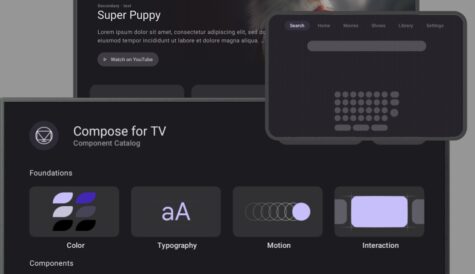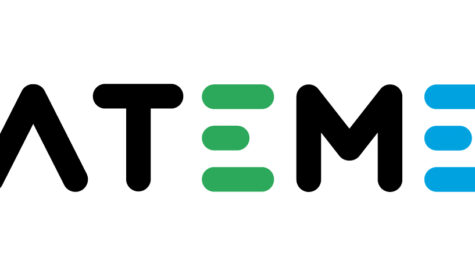HbbTV – what is it and why should you care?

Philipp Rotermund
In the TV business, we’ve become accustomed to a lot of acronyms and jargon. Just within the last few years we have been introduced to OTT, SVOD, AVOD, PVOD, FAST and various other iterations of what amounts to internet-delivered content that is either free to consumers or via subscription or one-off transaction. But one less-buzzy term I think you would be well advised to get acquainted with is HbbTV, or Hybrid Broadcast Broadband TV.
Now, before you start to yawn, stay with me on this. HbbTV is something of a wunderkind in the TV technology sector because is bridges the gap between traditional broadcast television and that of content delivered “over-the-top” (OTT) via the internet. For any of you who have been in television for a minute, you’ll know that broadcast TV is still with us and the majority of consumers don’t know how or why their content is getting to their TVs; they just know they want it. HbbTV technology makes that happen seamlessly.
The origins of HbbTV date back to 2010 when the first version of the hybrid broadcast specification was published and implementation across Europe and other regions began. The idea was simple: provide an open and standardized platform for the delivery of broadcast and broadband services through connected TVs and set-top boxes with the aim of enhancing the viewer’s experience with interactive and multimedia content.
Meantime, South Korea was working on a similar technology known as ATSC 3.0 (developed by the consortium known as the Advanced Television Systems Committee), which launched in May 2017, ahead of the United States. This early stage was partly aimed at showcasing the technology’s capabilities in time for the 2018 Winter Olympics. The South Korean launch demonstrated ATSC 3.0 features like ultra-high definition (UHD) video, improved audio, interactive services, and enhanced emergency alerts. But most importantly, it served as proof-of-concept for other countries, particularly the US which has made significant progress in rolling out ATSC 3.0 since.
The main difference between ATSC 3.0 and Europe’s HbbTV is that the latter is an application standard that can work on different underlying broadcast technologies, thus it has been adopted mainly in Europe and other parts of the world.
What’s so revolutionary about these hybrid technologies is their ability to offer broadcasters features for their viewers like catch-up TV, video on demand (VOD), interactive advertising, personalization, real-time sports statistics, program guides, games, and social networking — all delivered alongside traditional broadcast content. Of course, this level of personalization enhances user engagement, encouraging longer viewing times and fostering a deeper connection with the content.
And for platforms and FAST channel providers like wedotv, HbbTV makes distribution demonstrably easier. Whether its satellite, terrestrial, or broadband, including Ethernet networks, set-top boxes, and OTT services, HbbTV ensures that the channel and related services will be delivered to viewers in the same way. This convergence addresses the growing consumer demand for variety and accessibility, and not only retains but also expands viewer bases, tapping into the cord-cutting generation without alienating traditional TV audiences.
What makes this all possible is HbbTV’s adherence to the standards set by European Telecommunications Standards Institute (ETSI) where HbbTV once started, known as ETSI TS 102 796. This is tech-speak for a detailed framework that facilitates interoperability and compatibility across different manufacturers’ devices and broadcasters’ services. This ensures that consumers have access to a wide range of interactive and enhanced TV experiences, regardless of their equipment or network provider. Pretty genius, right?
Not only does HbbTV take the guesswork out of delivery of TV content, it also is revolutionary in its impact on TV advertising. By allowing for ads that are complementary to the video content and viewer preferences, HbbTV provides a more engaging and less intrusive advertising experience. This precision targeting enables advertisers to reach specific demographics within a single ad break, enhancing ad relevance and viewer receptivity. The result is a win-win scenario: increased ad revenue for broadcasters and a more palatable ad experience for viewers.
Perhaps one of the most significant advantages of HbbTV is its ability to collect and analyze real-time viewership data. This capability provides broadcasters with invaluable insights into viewer behaviors and preferences, enabling data-driven decisions that optimize content offerings and advertising campaigns. This has long been a sticking point for content suppliers and advertisers. Such analytics greatly improve the efficiency of ad placements and can also guide content creation and acquisition strategies, ensuring that programming aligns with viewer demand.
Now, I know it is confusing to have different names for this hybrid technology in the US and in Europe, but that’s a branding issue I’ll let HbbTV’s and ATSC 3.0 (aka NetGen TV!) respective committees sort out! What you really need to know is that HbbTV technology and its global counterparts represent a pivotal shift in the TV business. By leveraging the benefits of hybrid delivery, interactive features, standardization, advanced advertising capabilities, and real-time data analytics, broadcasters and advertisers can navigate the challenges of a fragmented media landscape. HbbTV not only enhances the viewer’s experience but also opens new revenue streams and strategic opportunities for the TV industry.
Lately, it seems like we’re always reading about market contraction and related cautionary tales, but the expansion and adoption HbbTV stands a beacon of light, as well as a particularly viable way to future-proof the television business.
Philipp Rotermund is co-CEO of wedotv, an AVOD and FAST channel providers with services in Germany, UK, Austria, Switzerland, Italy, US, the Nordics and Benelux.



